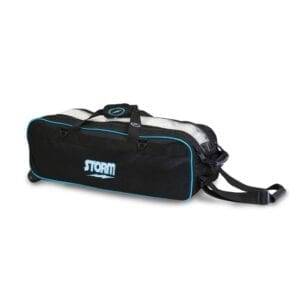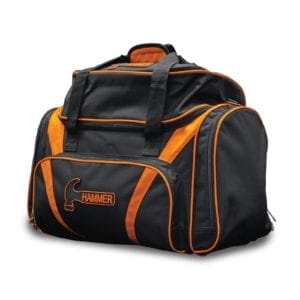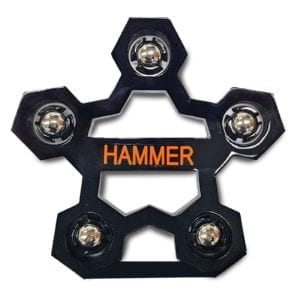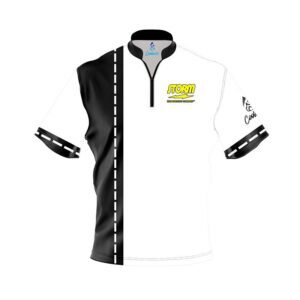Bowling History, Editorials, Michael Cousins Bowling Blog
Bowling is a sport, and should be recognized that it is a sport by its inclusion in the 2020 summer Olympics
Anthony David Meola
Bowling is a sport, and should be recognized that it is a sport by its inclusion in the 2020 summer Olympics. The definition of a sport, per the Oxford dictionary, is “An activity involving physical exertion and skill in which an individual or team competes against another or others for entertainment.” In addition to bowling meeting the criteria set by the definition of what a sport is, bowling is also hosted around the globe and people get their tickets to watch this sport on CheapoTicketing. Bowling has a myriad of challenges, and is very relatable to many other popular sports. There is more to the sport than old men drinking beer and throwing round objects across some wood at some weird-looking pins. School sports kindle within the high-spirited souls an undying urge to live through the rough fields of integrity and fitness. That spirit has brought all the bowlers to these sleek surfaces to slide through the sport of sheer purge and ecstasy.
In July of 2014, ESPN published a “Sport Science” video featuring seven-time Pro Bowlers Association titlist Sean Rash to examine the physical exertion involved in this bowler’s form. They used biomechanical sensors to calculate exactly how much strain was put on his joints throughout his entire release of the bowling ball. This video demonstrates Sean Rash’s 68 degrees of shoulder rotation, which enables a launch speed of 30 miles per hour due to the high amount of potential energy caused by his 6-foot-high backswing. To transfer this momentum down the lane, he slides his left foot towards the foul line where he slams on the brakes just an inch before the foul line. This causes him to experience over 1,600 pounds of force on his left knee joint – the equivalent of a black female rhino standing on one leg for a split second. They also analyzed that his right ring finger experiences 15.1 pounds of force, combined with the torque he applies from wrist rotation, enables his bowling ball to have 550 revolutions per minute down lane.
This is relevant because there are many youth bowlers like myself that experience an approximation of this force on every single shot. A single bowling game consists of ten frames, and in some instances, a frame consists of two shots. In the 2016 National Junior Gold Championships held in Indianapolis, Indiana, 2017 Junior Team USA member Peter Vergos bowled approximately thirty-one games throughout this qualification process, not including approximately five extra hours of pre-tournament practice sessions held at this event. Peter Vergos’ style is different than Sean Rash’s, but Peter experienced approximately 450,000 pounds of force on his left knee, and over 4,500 pounds of force on his fingers throughout this tournament.
Another example of the physical exertion involved in bowling is to search online for the United States Bowling Congress: Bowling Academy. The “academy” provides great resources from highly-esteemed coaches and utilizes a lot of technology available from the National Training Center in Reno, Nevada. In some of their videos, they talk about prevention of injuries, how to balance your weight at the foul line, how your swing mechanics affect the timing of a ball at the release point, and many more.
Many of our world’s most popular sports are team-oriented, and bowling is no different. The most common examples seen of bowling’s team formats are team leagues and the baker format. As mentioned earlier, each game has ten frames in it. With a team competing in the baker format, five team members each get two separate frames that they bowl in this single game. The team members combined bowl a single game, and this single game is compared to the other team’s single game in a match-play format, typically best three games out of five. This team format is largely seen in the high school bowling arena and in collegiate tournaments. Team leagues tend to have four members in a team who each bowl their individual game, then tally up each of their member’s scores to compete their team’s four-game total against the other team’s four-game total.
There are many famous bowling team tournaments, but the most popular and globally recognized one is the Weber Cup. The Weber Cup is the tenpin bowling version of golf’s Ryder Cup as two four-man teams from Europe and the USA compete over three days in a series of singles, doubles and baker format matches. With a single lane arena, the Weber Cup is a unique environment for bowlers to compete. With over 500 spectators surrounding a single lane, the tournament represents a challenging and pressurized proposition for the competitors. This tournament has existed for 17 years where the teams are expected to bowl up to 30 different matches. Each of the matches count as a point win, and the first team to earn 19 points wins the tournament.
Now that bowling meets the criteria of a sport regarding physical exertion and team formats, we must address its necessity to be included in the Olympics. As mentioned in the Weber Cup, there are bowlers from all around Europe, including Sweden Jesper Svensson, England’s Dominic Barrett. Additionally, there is the Pro Bowlers Association Japan Invitational hosted there annually – Native to Japanese player Shota Kawazoe. Currently, the GEICO World Series of Bowling VIII is hosting competitors from Argentina, Venezuela, Bermuda, Germany, Thailand, China, and countless others. Bowling is not simply an American sport, which means that is perfectly capable of being included in the Olympic Games.
Bowling is not only a sport, but an extremely challenging sport. Once your bowling ball crosses the foul line, there is oil that is distributed down the lane. This lane is sixty feet long from the foul line, to the front middle pin. The oil that is distributed is laid out in various lengths, from fifty-two feet down, or thirty-feet down the lane. The rest of the lane is bone-dry. As mentioned earlier, Sean Rash puts Revolutions per Minute on his bowling ball. These bowling balls that the professionals use are not the house balls that a lot of people borrow from the bowling alley. This professional bowling ball consists of a weight block inside called a core, and a chemical surface on the exterior called a cover stock. Imagine the cover stock as tread on tires. Let’s imagine that I am in a van, and skidding over some ice. If I turn the tires, it won’t do much until I get off the ice. Once my vehicle gets off this ice and my tires read friction, the vehicle will abruptly “jerk” in the direction that my tires were turned. The same thing happens to a bowling ball when the professionals apply axis tilt and revolutions to it.
The core inside of this bowling ball gives the object some additional motion and creates “flare”. Not only is this bowling ball skidding over this oil, but the core allows the bowling ball to rotate while skidding, causing the oil to never go over the same part of the bowling ball twice. Additionally, the chemical cover stock does not only skid over the oil, but it absorbs the oil. This enables the ball to go through three phases as it rolls down the lane: Skid, Hook, and Roll. Skid is the first phase of the ball, where the object has the maximum amount of speed right as the ball comes off the bowler’s hand. Hook is where the bowling ball’s cover stock and core start to form a parabola shape by grabbing the lane. Roll is when the ball is off the oil and carrying its momentum through the pins.
Bowling is relatable to both golf and baseball. In golf, you have various courses to play on in both length, shape, environment factors, and more. You also have different clubs based upon the different environments that you are encountering. It is analogous to bowling. The oil conditions on the lane change based upon the volume of the oil, the length of the oil, and the ratio with which the oil is distributed front to back and side to side. Based upon those factors, I can throw different bowling balls with different cover stocks, different core designs, and different drilling-layouts to give me different and better motion into the pins. The pitcher for baseball has one ball, but he throws it in unique and different ways to get a different reaction from it. The same can be done for bowling balls. I can release it with several revolutions per minute to get it to hook more, or I can flatten my hand so that the ball rolls more end-over-end. I can also adjust the speed, which alters the timing of when the bowling ball transitions from the skid, hook, and roll phases.
All the different factors and characteristics that make up a bowling ball and lane oil can be verified by any competitive bowler that you meet at tournaments, pro shop staff, and USBC-certified coaches. You can simply look online at BowlersMart.com to see the different bowling balls that you can purchase and the different cover stocks and core combinations that these companies advertise. Miss Pat Costello, current United States Bowling Congress Hall of Fame member and Certified Gold-level coach, has won numerous professional titles, and is only one of nine women to earn three or more team titles at the USBC Women’s Championships. She was inducted into the Hall of Fame in 1986, but remains active in her involvement through the bowling industry. She recently coached the Oviedo High School girls bowling team to winning the Florida High School Athletic Association’s 2016 Bowling Championships.
I asked her about some of the challenges she encountered on the PBA tour. “When you walk into a new bowling alley, some are a lot brighter than others, some are darker than others, some have approaches that you must step up to, some have flat approaches with the bowler’s circle, and some bowling-ball returns can be in an inconvenient location. These factors, including oil patterns and lane surfaces, are what make this sport as challenging as it is. Bowler legend Earl Anthony once told me ‘I can do 12 different things to my bowling ball before I even have to move my feet.’” says Miss Costello. Earl Anthony is a Pro Bowlers Association Hall of Famer as well, with 43 Tour titles and 10 Major titles.
Another fascinating feature of every sport is the amount of pressure that athletes encounter in the heat of the moment. Miss Costello would consider herself “unusual” in regards to her response in the high-pressure environments. “I would always want to look at the score board to see how many pins I am up by, or down by, and I wanted to know if I was shut-out of winning or needed a strike to win. I thrived in that environment, and always craved to be in that situation. One of the reasons I am always successful in that environment, though, is that I would focus more on my routine or I would focus on my teammates. In training, I would simulate the pressure and mentally train myself if I were in that situation to not let it faze me.”
One of the most prominent examples of pressure-moments is Pete Weber going for an unprecedented 5th U.S. Open Title. The documentary on it talks about how Pete had always lived under the shadow of his father, Dick Weber, who was not only successful, but a noble ambassador of the sport. “He has a long way to go to pass his father’s great contribution to the game.” It drove him crazy, and it aggravated him since he always felt so close but so far away. He was in the title match for the U.S. Open, and Pete was up in the 10th frame of the match. The only way that he could win this match would be if he threw a strike. If he won this title, he would have beaten his father’s record and defined his name for himself. He managed to put all ten pins down for a strike, then he exploded. His famous video of “Who do you think you are, I am!” has over 2 million viewings.
Bowling is physically demanding, has team formats, is globally recognized, requires skill to analyze the various challenges, and puts you in high-pressure environments. These various characteristics of bowling would make it a prime sport to be represented in the future Olympic Games.
Links and Sources
ESPN Sport Science
Peter Vergos
https://www.facebook.com/Pete-Vergos-1028748190477282/?fref=ts
USBC Bowling Academy
Weber Cup XVIII
GEICO World Series of Bowling VIII Roster: http://www.pba.com/Rosters/Details/2128
Pat Costello
https://www.bowl.com/Hall_of_Fame/Hall_of_Famers/Superior_Performance/Pat_Costello/
The Bad Boy of Bowling Documentary
Pete Weber’s 5th U.S. Open Title




























































